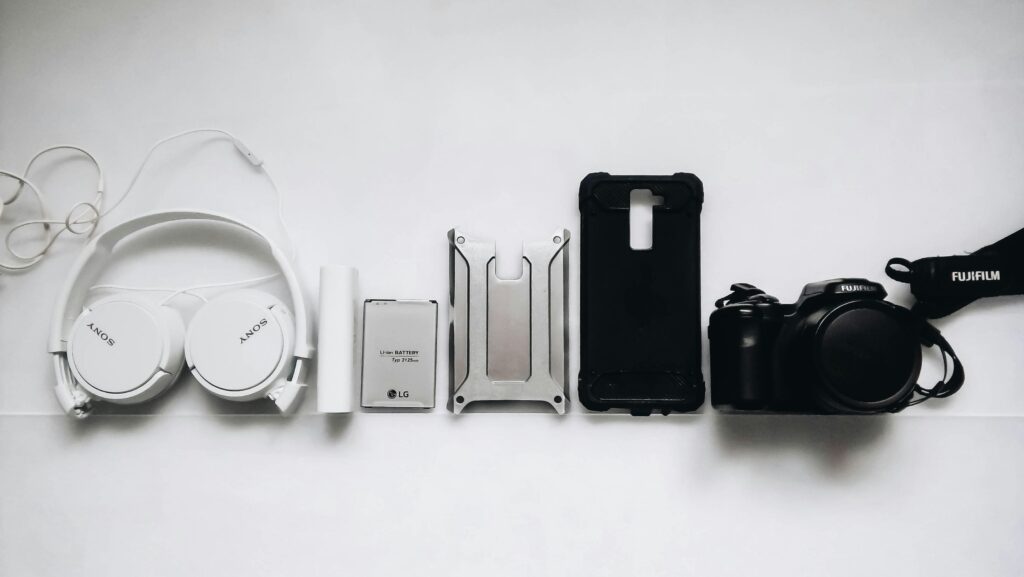Have you ever bought a shiny new gadget only to realize later that it didn’t live up to the hype?
In today’s fast-paced tech world, companies release new devices almost every month, each promising to change your life. From smartwatches and VR headsets to wireless earbuds and AI-powered assistants, the market is flooded with gadgets claiming to be “must-haves.”
But here’s the question: are these gadgets really worth your money, or are they just marketing gimmicks?
This article will break down some of the most popular modern gadgets, explore their real value, and help you make smarter buying decisions. By the end, you’ll know which gadgets deserve a spot in your life—and which ones are better left on the shelf.

The Hype Behind Modern Gadgets
Technology marketing thrives on creating excitement. Launch events are packed with buzzwords like next-gen, revolutionary, and game-changer. Companies know that customers are drawn to sleek designs, new features, and promises of making daily life easier.
However, hype often overshadows practicality. Many gadgets deliver far less than expected once the excitement wears off. Understanding the difference between hype and reality is key before making a purchase.
Categories of Gadgets That Attract the Most Hype
1. Smartwatches: Stylish but Essential?
Smartwatches like the Apple Watch, Samsung Galaxy Watch, and Fitbit dominate the wearable tech market.
Hype:
- Track fitness, sleep, and stress levels.
- Stay connected without reaching for your phone.
- Act as a stylish fashion accessory.
Reality:
- Useful for health tracking, but most features duplicate your smartphone.
- Battery life is often underwhelming.
- High-end models can cost as much as a mid-range smartphone.
Verdict: Smartwatches are great for fitness enthusiasts and productivity-driven users, but for casual users, they may not justify the price.
2. Virtual Reality (VR) Headsets: Gaming’s Next Frontier
Devices like the Meta Quest, HTC Vive, and PlayStation VR have taken center stage.
Hype:
- Fully immersive gaming experience.
- Transform education, healthcare, and remote work.
- Marketed as the “future of entertainment.”
Reality:
- VR still suffers from limited content libraries.
- Extended use can cause discomfort or motion sickness.
- Prices remain high, and accessories add up.
Verdict: Exciting for gamers and tech explorers, but still not mainstream enough to replace traditional devices.
3. Wireless Earbuds: Compact and Convenient
AirPods, Galaxy Buds, and Bose QuietComfort Earbuds are everywhere.
Hype:
- Crystal-clear sound.
- Noise-cancellation for focused listening.
- Compact design with seamless connectivity.
Reality:
- Sound quality varies by brand and model.
- Smaller devices mean easier to lose.
- Premium models can be overpriced compared to wired alternatives.
Verdict: Worth the money if you value convenience and mobility, but not necessary for everyone.
4. Smart Home Devices: The “Connected Lifestyle”
Think smart speakers like Amazon Echo, Google Nest, and home security gadgets.
Hype:
- Automate daily routines with voice commands.
- Control lighting, temperature, and security remotely.
- Marketed as time-savers and efficiency boosters.
Reality:
- Security and privacy risks are major concerns.
- Many features are underused by average households.
- Ongoing costs if you expand into full ecosystems.
Verdict: Smart homes are futuristic, but casual users may find them unnecessary luxuries.
5. Fitness Tech: From Trackers to Smart Scales
Hype:
- Track calories, heart rate, sleep, and steps.
- Motivate healthier lifestyles.
- Sync seamlessly with apps.
Reality:
- Data accuracy can be inconsistent.
- Many users abandon devices after the initial excitement.
- Traditional exercise and discipline still matter more.
Verdict: Helpful for motivation, but results vary depending on personal consistency.
How to Decide If a Gadget Is Worth Your Money
Before rushing to buy the latest device, ask yourself these questions:
- Does it solve a real problem?
- Example: If you often miss calls while running, a smartwatch may help.
- Example: If you often miss calls while running, a smartwatch may help.
- Is it cost-effective compared to alternatives?
- Wired headphones can still provide excellent sound quality at half the cost of premium earbuds.
- Wired headphones can still provide excellent sound quality at half the cost of premium earbuds.
- Will I use it regularly?
- A VR headset may sound fun, but if you’ll only use it once a month, it’s not worth the investment.
- A VR headset may sound fun, but if you’ll only use it once a month, it’s not worth the investment.
- Does it have long-term support?
- Gadgets with frequent software updates and warranties are safer investments.
- Gadgets with frequent software updates and warranties are safer investments.
- Am I buying for need—or hype?
- If marketing is the only reason you’re buying, think twice.
- If marketing is the only reason you’re buying, think twice.
Case Studies: Gadgets That Met & Missed Expectations
Gadgets That Delivered Value
- AirPods Pro: Despite their price, they set industry standards in design and noise cancellation.
- Amazon Kindle: Transformed reading experiences without unnecessary distractions.
- Apple iPad: Offers versatility for students, professionals, and creatives.
Gadgets That Fell Short
- Google Glass: Highly hyped but discontinued due to privacy concerns and limited usability.
- 3D TVs: Marketed as the future of television but lacked compelling content.
- Hoverboards: Gained viral popularity but were unsafe and quickly faded out.
The Psychology of Gadget Purchases
Marketers rely heavily on fear of missing out (FOMO). Limited-time launches, influencer promotions, and sleek advertisements fuel emotional buying. Understanding this psychology can save you from unnecessary purchases.
Tip: Wait at least 30 days before buying a new gadget. If you still feel the need after the hype fades, it’s likely a worthy purchase.
Conclusion: From Hype to Reality
Not every new gadget deserves your hard-earned money. While some genuinely improve daily life, many are more about marketing than necessity.
Key Takeaways:
- Smartwatches and wireless earbuds are useful but not essential.
- VR headsets and smart homes remain niche products.
- Fitness tech can motivate but doesn’t guarantee results.
- Always evaluate gadgets by usefulness, cost, and longevity.
Before spending, ask: Does this gadget add real value to my life, or am I buying into the hype?
Make smarter decisions by researching reviews, comparing alternatives, and waiting for hype to settle.


